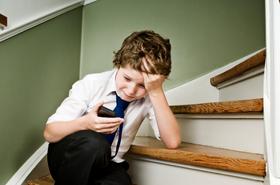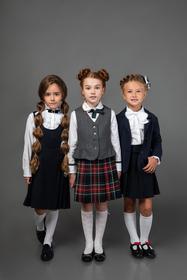Giddings State School is a juvenile correctional facility of the Texas Juvenile Justice Department located in unincorporated Lee County, Texas, near Giddings. In 2004, the state school was Lee County's largest employer.
Serving 115 students in grades 9-12, Lone Star H S Southeast ranks in the bottom 50% of all schools in Texas for overall test scores (math proficiency is bottom 50%, and reading proficiency is bottom 50%).
The percentage of students achieving proficiency in math is ≤10% (which is lower than the Texas state average of 44%). The percentage of students achieving proficiency in reading/language arts is ≤5% (which is lower than the Texas state average of 51%).
Minority enrollment is 81% of the student body (majority Black), which is higher than the Texas state average of 75% (majority Hispanic).
Quick Facts (2025-26)
- Grades: 9-12
- Enrollment: 115 students
- Minority Enrollment: 81%
- Overall Testing Rank: Bottom 50% in TX
- Math Proficiency: ≤10% (Btm 50%)
- Reading Proficiency: ≤5% (Btm 50%)
- Science Proficiency: ≤10% (Btm 50%)
- Source: National Center for Education Statistics (NCES), TX Dept. of Education
Top Rankings
Lone Star H S Southeast ranks among the top 20% of public schools in Texas for:
Category
Attribute
Diversity
Percent Eligible For Free Lunch
Community Size
School Overview
Lone Star H S Southeast's student population of 115 students has declined by 48% over five school years.
Grades Offered
Grades 9-12
Total Students
115 students
Gender %
Total Classroom Teachers
n/a
School Rankings
Lone Star H S Southeast ranks within the bottom 50% of all 8,096 schools in Texas (based off of combined math and reading proficiency testing data).
The diversity score of Lone Star H S Southeast is 0.66, which is more than the diversity score at state average of 0.64. The school's diversity has stayed relatively flat over five school years.
Overall Testing Rank
#8053 out of 8096 schools
(Bottom 50%)
(Bottom 50%)
Math Test Scores (% Proficient)
≤10%
44%
Reading/Language Arts Test Scores (% Proficient)
≤5%
51%
Science Test Scores (% Proficient)
≤10%
46%
Student-Teacher Ratio
n/a
14:1
American Indian
n/a
n/a
Asian
n/a
6%
Hispanic
39%
53%
Black
40%
13%
White
19%
25%
Hawaiian
n/a
n/a
Two or more races
2%
3%
All Ethnic Groups
Eligible for Free Lunch
100%
57%
School Statewide Testing
School District Name
Source: National Center for Education Statistics (NCES), TX Dept. of Education
Frequently Asked Questions
What is Lone Star H S Southeast's ranking?
Lone Star H S Southeast is ranked #8053 out of 8,096 schools, which ranks it among the bottom 50% of public schools in Texas.
What percent of students have achieved state testing proficiency in math and reading?
≤10% of students have achieved math proficiency (compared to the 44% TX state average), while ≤5% of students have achieved reading proficiency (compared to the 51% TX state average).
How many students attend Lone Star H S Southeast?
115 students attend Lone Star H S Southeast.
What is the racial composition of the student body?
40% of Lone Star H S Southeast students are Black, 39% of students are Hispanic, 19% of students are White, and 2% of students are Two or more races.
What grades does Lone Star H S Southeast offer ?
Lone Star H S Southeast offers enrollment in grades 9-12
What school district is Lone Star H S Southeast part of?
Lone Star H S Southeast is part of Lone Star School District.
School Reviews
5 10/10/2025
my son is there and he is been safe since he got at that place. if they behave will be no problems. staff is great and always willing to help
Review Lone Star H S Southeast. Reviews should be a few sentences in length. Please include any comments on:
- Quality of academic programs, teachers, and facilities
- Availability of music, art, sports and other extracurricular activities
Recent Articles

Public School Open House & Enrollment Season Guide
A parent-focused guide to the public school open house and enrollment season, with expert questions, timelines, and decision tips.

School Supply Budget 2026: Fees, Books, Tech Costs
School Supply Budget 2026 guide for parents, covering fees, textbooks, technology, and hidden extras to plan ahead.

Education Funding in America (2025 Update)
Comprehensive 2025 update on public school funding in America, new federal and state policies, per-pupil spending, and equity challenges.





